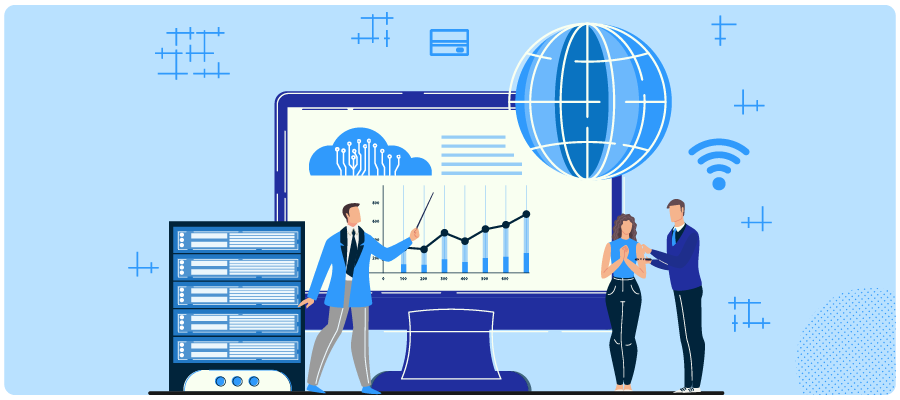The SaaS (Software as a Service) industry is growing rapidly.
In the United States alone, there are 15,000 SaaS companies (2021). The number is only growing to increase as Gartner projects the SaaS market to grow to 171.9 billion by the end of 2022.
Selling SaaS has been a resounding success worldwide. What’s more, according to a study by BetterCloud:
- Companies with 50 to 99 employees utilize an average of 24 SaaS applications.
- Companies with 100 to 499 employees use twice as many SaaS apps as those with 50 to 99 employees.
- Companies with over 1,000 employees use an average of 177 SaaS-based products.
So, the SaaS industry is teeming with opportunities to sell.
Skilled SaaS sales reps can transform your business. The best sales reps are productive, driven, and inventive in their day-to-day activities. They have a flair for spotting good prospects and completing deals that appear to be out of reach.
But before we get into how strategic SaaS sales can change your business, let’s define what we mean by it.
In this article:
• What is SaaS sales?
• B2B vs. B2C SaaS sales
• Challenges
• Benefits of SaaS sales
• A step-by-step guide to build your SaaS sales strategy
• 5 Crucial SaaS sales metrics
What is SaaS sales?
SaaS sales is the act of selling your business’s web-based software to customers. Individuals, as well as enterprises and businesses, may buy your product.
Since technology is still new to older generations, SaaS products are generally more difficult to perceive than physical products. Before they feel ready to buy, prospects require a lot more information from salespeople.
A distinguishing feature of SaaS sales is that the products are typically sold on a subscription basis. So, a SaaS customer need not spend tens of thousands of dollars in one go.
Now, SaaS products can cater to both B2C and B2C markets.
An example of SaaS for B2C is the design platform—Canva. On the other hand, the examples of SaaS products for the B2B customers can be CRM (LeadSquared, Salesforce, and many more), Adobe, Shopify, etc.
While B2C SaaS sales can be simpler—the user can register and start using the product intuitively, B2B SaaS sales requires a degree of expertise to sell the product.
Let’s look at the difference between B2B SaaS and B2C SaaS sales in detail.
B2B SaaS vs. B2C SaaS Sales
| B2B SaaS | B2C SaaS | |
| Target market | Enterprises, SMBs, and Start-ups | Individuals |
| Audience segmentation | Most B2B SaaS products cater to niche audiences with specific needs. | B2C SaaS companies use fewer techniques to segment their audience. They generally sell to a bigger consumer base compared to B2B companies. |
| Use cases | Accounting, prospecting, project management, ticket management, customer relationship management | Personal finance, design, marketing, etc. |
| Sales cycle | Weeks to months | Shorter than B2B SaaS. Reps can close a sale within a few days. |
| Sales strategy | B2B SaaS tends to focus on lead generation and increasing customer engagement. Also, 84% of B2B marketers use form submissions in their content to generate leads. | B2C SaaS tends to focus on brand image and customer loyalty programs. This is why they invest in activities involving influencer marketing. |
| Popular marketing channels | LinkedIn is the most popular social media app for B2B marketing. For organic social marketing, 96 percent of B2B content marketers use LinkedIn. We can attribute this to the fact that most businesses are the easiest to reach on LinkedIn. | Facebook is the most popular social media app for B2C companies. Recent statistics show that Facebook accounts for 2.89 billion monthly active users. |
| Decision making | Informed. Due to the complexity of the product, most buyers engage in a free trial or a demo first. | People can buy subscriptions at the spur of the moment. They may unsubscribe later if they aren’t a good fit for what you’re selling. But impulse purchases are more common for B2C products. |
These are some significant differences between the B2B and B2C SaaS. Accordingly, the sales process differs in both segments.
However, we can say that selling a B2C SaaS product is fairly simple compared to B2B SaaS. It is because,
- One, the ticket size is lower
- And two, the market is usually bigger
However, consumers may be reluctant to use SaaS because of security and privacy concerns. Let’s take a closer look at the SaaS sales challenges.
Challenges in SaaS sales
Sales teams face unique hurdles in the realm of corporate SaaS. The customers are powerful, the sales cycle is lengthy, and the solution is invisible. Below are some of the most common challenges sales reps face:
- The first challenge starts with selling enterprise SaaS. You must be able to handle a high number of end-users and roles. It also has to work with a variety of other business programs. Some of which include resource planning, human resources, payment processing, and so on.
- The second challenge that B2B SaaS teams face is buyers rarely purchase within days, weeks, or even months. A simple interaction does not equal a sale. Instead, a sales cycle develops.
- Most companies need to invest in a long-term contract when buying SaaS solutions. 48% of companies have a one-year contract, and 11% have a three-year or longer contract. This can hold them back from investing if they don’t get a sufficient trial period.
- Only 2% of sales take place at the first meeting. 63% of clients who are requesting details about your solution now will not buy anything for 3 months. Another 20% will take more than a year to purchase. As a result, consistent follow-ups are necessary to make a sale. We analyzed the sales trends from 2013 to 2021, and found that in B2B segment, the sales cycle may easily extend to 90 days and beyond.
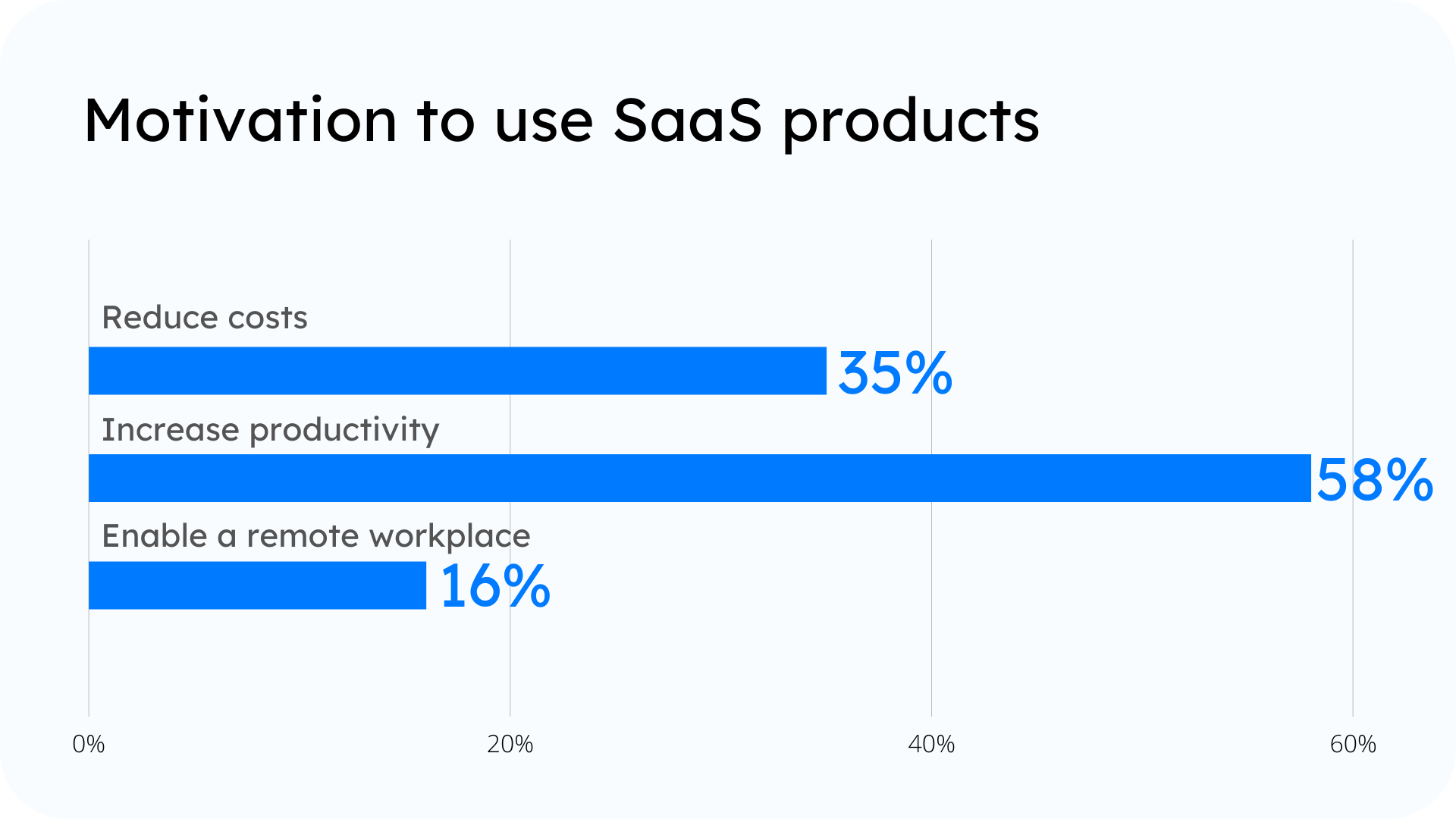
- Content is in high demand among SaaS buyers. They want to read white papers, watch product trial videos, download case studies, and more. They do this to reduce their concerns and queries at each point of the buying process. The challenge SaaS sales teams face comes down to the fact that they aren’t content creators. They’re used to selling items rather than delivering information.
These are some of the challenges that SaaS sales reps face every day. But these challenges do not mean that there isn’t any benefit to selling SaaS solutions. We’ll get into the perks of selling a SaaS product in the next section.
Benefits of SaaS Sales
The SaaS salesman gains significant benefits while selling, some of which are:
- The SaaS concept depends on a subscription or pay-per-period model. Clients generally find SaaS business solutions to be more economical and accessible. Renting software weekly or monthly is less risky than purchasing costly software outright.
- SaaS products typically house multiple users. All users can share the cost of maintenance and upgrades. For example, 53% of Netflix users fall under shared accounts. This allows them to pay for a high-quality product as a group. Even huge companies can benefit from SaaS technology by renting it for a short time if necessary.
- Currently, 92% of businesses host at least part of their IT systems in the cloud. SaaS customers can store and backup data on cloud servers and access it from a variety of devices. Clients can profit greatly from high data security solutions with cloud technology.
- Customers enjoy great flexibility with SaaS models. This is because they only pay for the product when they use it. Businesses can offer unique subscription plans with multiple tiers to clients. Customers can start or stop utilizing a service based on their goals.
- Businesses can frequently engage in free product trials with SaaS models. Customers can try out the software for free for a week, fortnight, or month. Prospective buyers value the chance to try a product before investing money in it. It is because it reduces risk and increases return on investment.
These are some of the perks of selling SaaS solutions across industries. The best part is customers also have a motive to buy SaaS—making selling to them easier.

So, the market is there. And it’s booming. But how can you effectively sell SaaS products? Let’s explore.
A step-by-step guide to build your SaaS sales strategy
“Customers won’t care about any particular technology unless it solves a particular problem in a superior way,” says Peter Thiel, Co-founder, PayPal
A lot of time, your customers may not know the problem. Sometimes when they know the problem, they may not know how your product could solve it.
So, every step of your SaaS sales strategy must involve educating and helping your buyers achieve more.
In the subsequent sections, we’ll talk about developing an effective SaaS sales strategy, which begins with identifying your target audience.
1. Identify buyers
In the traditional sales models, companies focused more on building brand awareness and generating prospects.
It works when you’re targeting a mass audience. But when you sell a specialized product, you need to be selective. Because, after a certain point, too many junk inquiries will become overwhelming for your teams.
Generating high-quality leads is a top priority for 79% of marketers around the world. Sadly, salespeople and marketers generally struggle here.
The first step in finding prospects is creating a customer profile. It covers the demographic and behavioral attributes of your target audience. You can use this info for paid marketing campaigns, sales outreach, and more.
Now, if your inbound channels are strong, and you generate thousands of leads every day. Scaling your sales team can be one solution. But the more effective one would be qualifying your leads automatically. This way, you can focus on those opportunities first that have a higher chances of conversion.
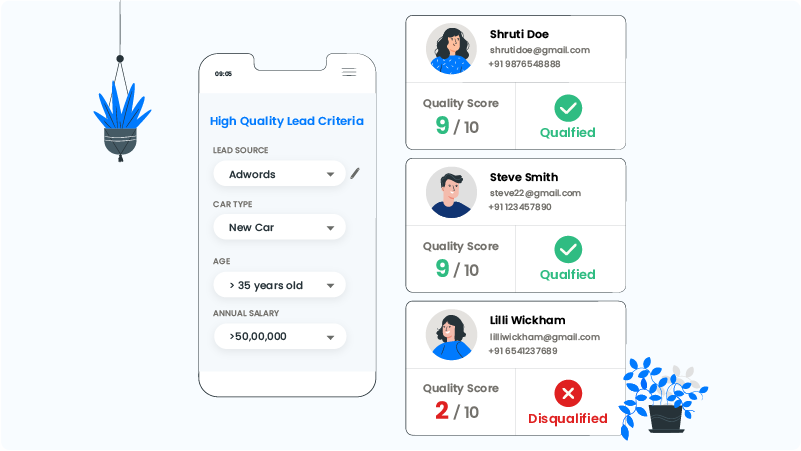
Tools like LeadSquared CRM help you score leads based on the attributes important to you. For example, job title, product requirement, industry, etc. The more the score, the better the prospect fits into your buyer persona. So, you can save time and effort spent chasing after wrong leads.
The next step in your SaaS sales strategy is connecting with the buyers.
2. Establish connection
Establishing a connection with the buyer means reaching out to them, explaining your proposition, and influencing them to invest in your solution.
If you’re selling a B2B SaaS product, you’ll have to:
- Conduct discovery calls to understand the prospect’s pain points and requirements.
- If they have a specific requirement, and you offer custom solutions, you may need to consult your pre-sales team.
- Show product demo
- Handle objections
- Share a proposal
In contrast, if you’re in B2C SaaS sales, you can close the sale in just one call itself.
But the key here is, in SaaS sales, you don’t push a product. You educate the buyer. You tell them how it can make their lives easier and better. Or the outcomes they can achieve by buying their subscription.
So, unlike other sales methodologies, SaaS sales generally involves a consultative selling approach and focuses on repo building with the buyers.
3. Pricing
Typical B2B sales is notoriously famous for:
- Pushy salespeople
- Product demos
- Undisclosed pricing
- Lengthy contracts
People now seek transparent pricing. While it makes sense for enterprise or custom-build software solutions to offer a quote after a detailed discussion, SaaS customers want to know the pricing before even getting on a call with an SDR (Sales Development Representative).
Especially if you’re catering to the B2C segment, you can make your sales faster by disclosing the pricing.
Here’s an example of making the pricing visible to the customer.
(Source: Grammarly)
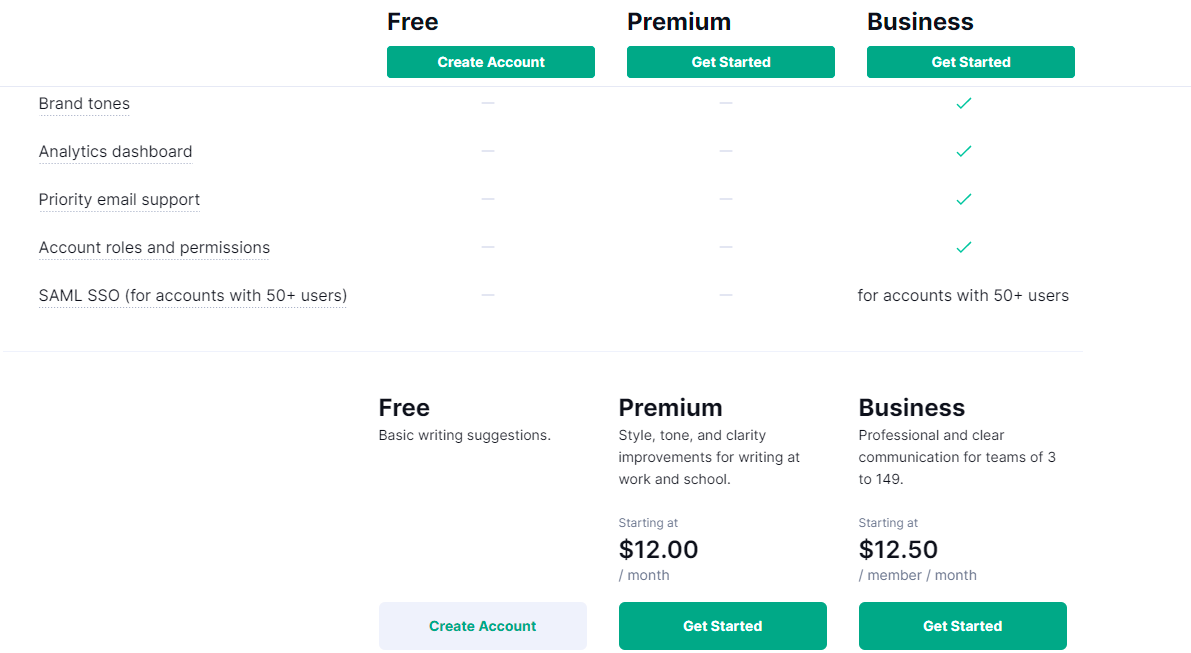
4. Provide Demos and Trials
As mentioned before, you may need to give free trials or demos for customers to experience the product first-hand.
You can offer free N days trial option, or you can give an option to request a demo.
Now, if you offer demos, you can reduce the back and forth communication with the prospect by sharing your calendar and giving an option to book a meeting in your first email itself.
5. Onboard Customers
Onboarding is the process of assisting your clients while implementing your software. It can consist of activating, configuring, and transferring data to their new apps. Onboarding also involves training the users to use the product. It is an essential step for any successful SaaS sales practice. Customers are far less likely to use your apps if they are not properly onboarded.
Companies are usually reluctant to pay for something they do not use. Therefore unsuccessful or poor onboarding can result in a churn rate of up to 80%. It can also place a lot of strain on your customer care staff as they have to deal with a constant influx of frustrated clients.
B2C SaaS products are made intuitive enough for anyone to use without training. However, in both B2B and B2C SaaS sales scenarios, keep the following things handy to reduce the strain on customer support teams.
- Self-help documentation and tutorials
- In-app suggestions
- FAQs
- Product training modules.
A catch here is not everyone is comfortable with self-paced learning. For example, we surveyed 3,061 CRM customers and found that more than 50% prefer live training over self-paced training.
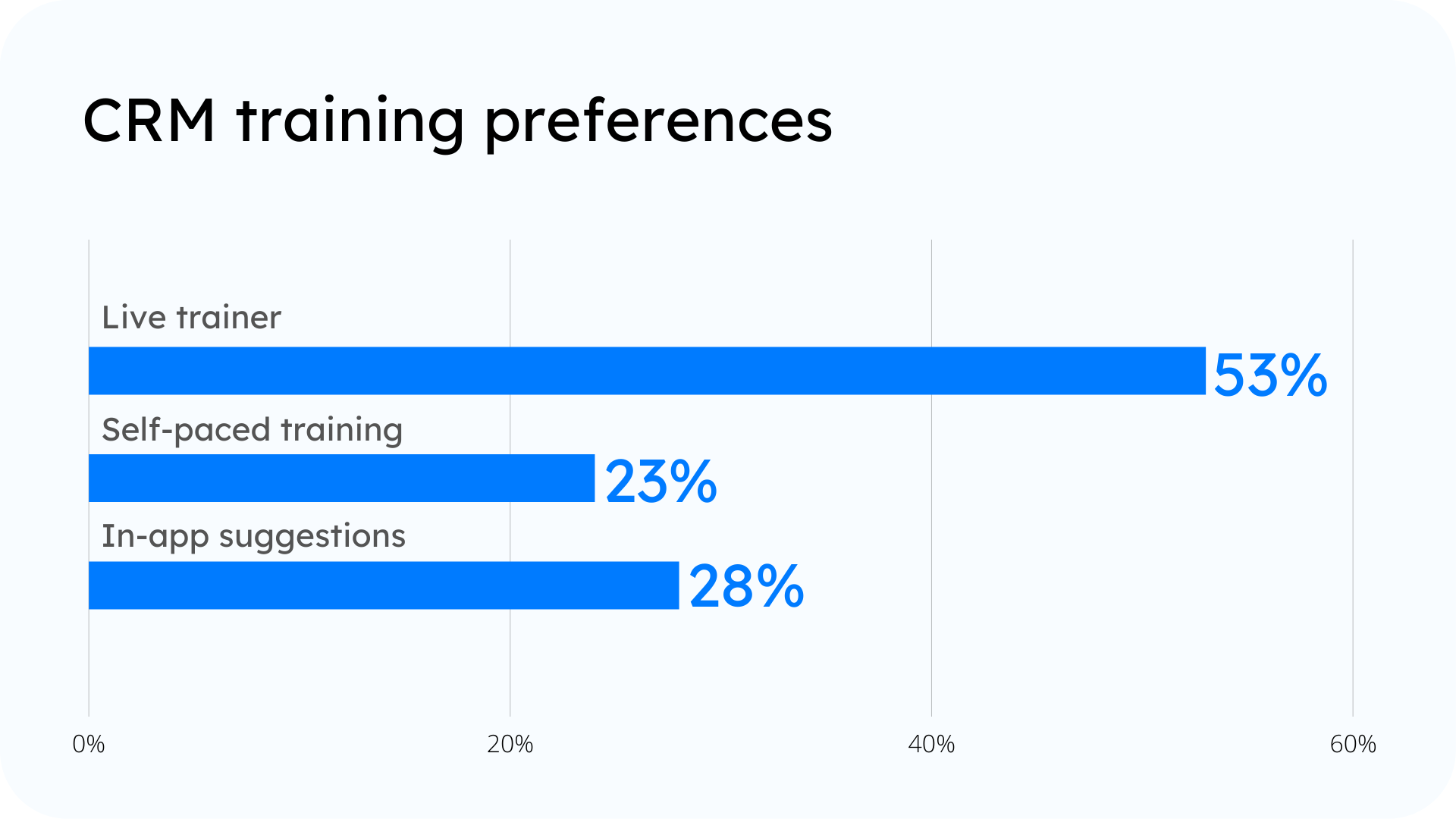
So, understand what your users need. Accordingly, include a training module in your onboarding program.
Along with this, share regular product updates and tutorials with customers so that they know where to find help instead of raising a support ticket outrightly.
6. Retain Customers
In SaaS sales, customer retention is extremely important. It determines whether or not your customers are happy with your offering.
It’s a known fact that customer retention is cheaper than acquiring new ones. Also, a simple 5% increase in customer retention rate may lead to 25-95% higher profits.
Whether you cater to B2B or B2C segments, try the following techniques for improving customer retention.
- Offer rewards and launch loyalty programs. Companies using a tier-based loyalty plan reported a 1.8X better ROI than those without tiers.
- Invest in positive branding and public image. According to 88% of executives, companies must lead with purpose now more than ever. Similarly, several buyers say that they would invest in a company that supports a cause they believe in.
7. Increase profit margins and revenue through upsell and cross-sell
Just like customer retention can bring higher profits, upselling and cross-selling can directly impact your business bottom line.
Upselling is inviting the customer to consider/purchase more expensive items, upgrades, or other add-ons to generate more revenue. In contrast, cross-selling is recommending products or services to your existing customer that will complement or expand the products or services they already have.
Both these strategies are important in SaaS sales as customers are more likely to buy from a known brand than an unknown brand.
For example, if you’re selling a SaaS video animation tool, you can propose premium creatives to your users to make their videos more effective.
A tool that can help you automate cross-selling and up-selling is an opportunity management CRM.
It is a specialized feature in some CRMs that allows you to identify upsell and cross-sell signals and pitch your offering accordingly. For example, if your customer is checking out a product on your website, you can call them or send them discount coupons to nudge them to buy instantly.
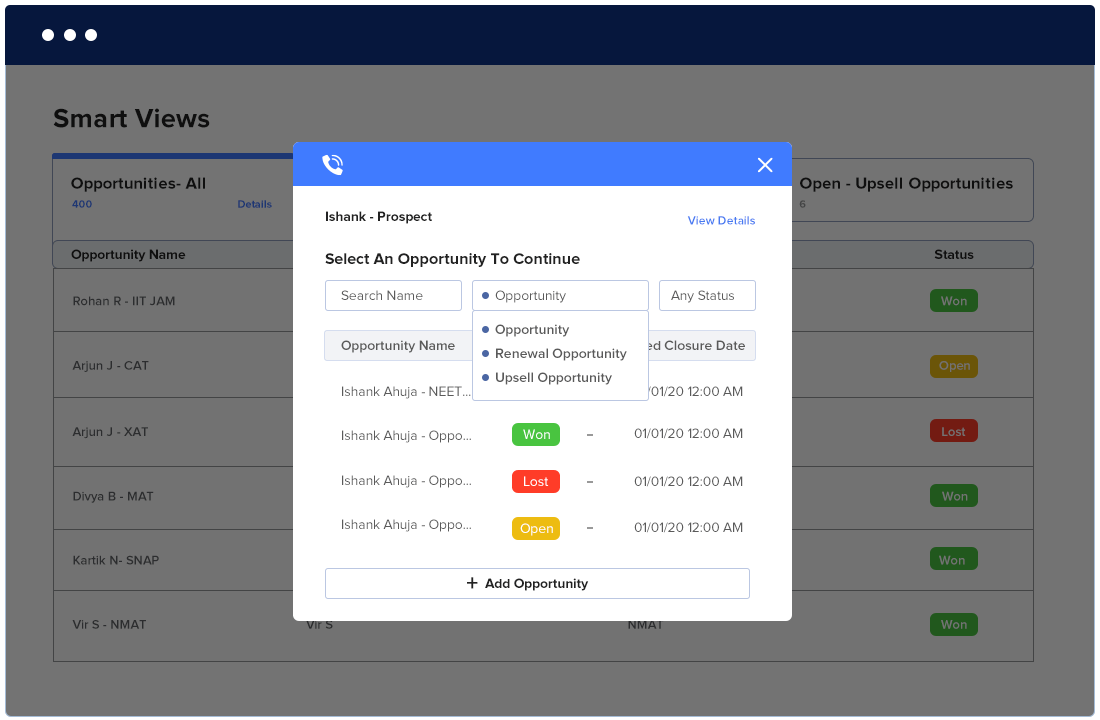
These are some strategies you can use while selling SaaS solutions. But these strategies will go in vain without any tools to measure its success. Measuring significant B2B and B2C sales KPIs is essential to success for SaaS.
5 Crucial SaaS sales metrics
1. Customer Acquisition Cost (CAC).
This is one of the most crucial KPIs for a SaaS company to monitor. It calculates the actual cost of acquiring a new customer or user for your product.
The CAC Formula:

Salespeople and their teams calculate this by dividing the total cost of marketing and sales efforts by the number of new clients obtained. They do this for a specific time period or campaign.
It’s an important sales metric to monitor. By measuring CAC on a campaign-by-campaign basis, you’ll be able to identify the most effective (or ineffective) campaigns.
2. The Average Selling Price (ASP)
This is the initial price that a customer pays for your service. It excludes any extra upsells that occur during the contract.
It’s an important sales measure to track for your SaaS. As it helps you determine whether your CAC is sustainable.
ASP Formula:

ASP is an important KPI for sales teams as it provides a good indicator of the type of customer you attain. If the ASP is increasing every month, you can believe your sales teams are interacting with and converting customers who are willing to invest in your solution.
3. Lead Velocity Rate (LVR)
Another useful metric for SaaS sales and marketing to monitor is lead velocity rate. LVR is one of the clearest growth metrics known. As it tracks the increase in leads from one period to the next. If your LVR increases month after month, it indicates that demand for your solution is rising.
Formula to calculate LVR:

You should keep an eye on your LVR at all times. In contrast to revenue measurements, which are lagging indicators, it is a real-time indicator of growth.
4. Lead Conversion Rate (LCR)
The Lead to Conversion Rate is an excellent measure of how your sales funnel is performing.
The LCR Formula:

If LCR is stable or increasing, your lead conversion rate will show how you can close new leads. If your LVR is high but your Lead Conversion Rate is poor, you should concentrate your efforts on raising your conversion rate.
You might wish to check conversion rates for each level of your sales funnel. It can help you find bottlenecks and where you should focus your efforts to help grow.
5. Monthly Recurring Revenue (MRR)
Lastly, we have MRR or Monthly Recurring Revenue as a crucial SaaS sales metric.
Formula to calculate MRR:

It is the predictable total revenue generated by your business from all active subscriptions in a particular month. It’s one of the best markers of a company’s health. Your SaaS company will thrive as long as you can maintain and grow your MRR.
Note, if you allow clients to pay on an annual basis, divide your yearly plan by 12. This is to help fit it into your MRR models.
So, these are the important metrics to track while selling SaaS products.
The takeaway
In SaaS sales, it is essential for you to measure your sales team and their growth. But additionally, you need to invest in tools that help you reach your sales goals. Use sales tracking software to get a clear picture of your key metrics and trends.
“We have been using LeadSquared for the past 7 years and if you think measuring is important, then I suggest you give LeadSquared a try. It makes it easy for you to measure both your marketing and sales parameters without errors. Besides, it is very customizable and easy to use. I must say that of everything I’ve used, this is the best lead management tool.”
Mrinal Mohit, COO, BYJU’S Classes
If you want to achieve high-velocity sales, check out LeadSquared CRM.
Book a quick 20-minute demo and experience how it level ups your sales process yourself!





